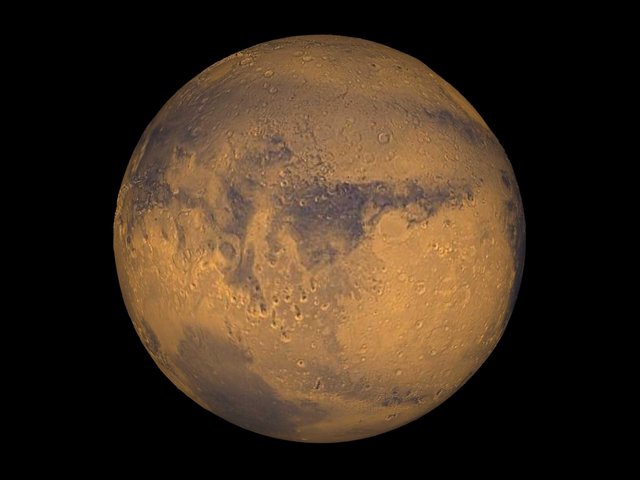Life on Mars? X marks the spot!
The question whether or not there ever was Life on Mars is one of the big mysteries of our solar system. We know that there's plenty frozen of water on Mars. And we are also pretty sure that Mars had liquid water for long times during the past. This would have given life plenty of opportunity to develop. But we don't really know how likely it is for life to develop in the first place. To answer this question scientists will want to look for any proof that living creatures have existed in the past.

Image by NASA (public domain)
Nowadays Mars is a barren planet. It is inhospitable largely due to the radiation that is constantly present on the surface. There is also no liquid water and the temperatures are extreme. High resolution images of Mars surface show many features that point to the existence of liquid water in the past. One can see river beds, dried out lakes and solidified ripples usually found at the bottom of the sea.
Future missions to Mars will want to search for fossils. But when you have a whole planet to look around, where do you start? Now scientists from the University of Edinburgh have published a study shortlisting the most promising sites on Mars to look for fossils. The study was published in the Journal of Geophysical Research. It lists a number of very specific sites where the search for fossils could be most promising. The researchers use experience from fossil hunting on Earth to guide their search for fossils on Mars. Many geological features on Mars have similar counterparts on Earth. It is natural to assume that similar geological features also have a similar history. This means that the experience from Earth can be transferred to other planets such as Mars.
The researchers state in their publication “The Martian surface is cold, dry, exposed to biologically harmful radiation and apparently barren today.”
The large team of co-authors consists of members from the University of Edinburgh, NASA’s Jet Propulsion Laboratory, scientists from Brown, MIT, and Yale and others. They continue to explain “Nevertheless, there is clear geological evidence for warmer, wetter intervals in the past that could have supported life at or near the surface. This evidence has motivated National Aeronautics and Space Administration and European Space Agency to prioritize the search for any remains or traces of organisms from early Mars in forthcoming missions.”
Some of the spots they have made out are on the bottom of ancient, now dried out lakes. The idea behind this choice is the following scenario. Any life that existed in the lake when it was filled with water would have sunk down to the bottom. The mud then compressed and solidified. This would have preserved the living structures in the form of fossils. Then the lake dried out revealing the bottom surface. These types of sites combine a high probability of finding fossils with easy access by a potential spacecraft.
The fossils that the scientists are expecting to find are not complex structures with a skeleton like the ones you might expect to see in a museum. If life ever existed on Mars it was probably very simple. It would have consisted of single cell organisms. The fossils would then be equally simple. Scientists are expecting microscopic structures embedded within the rock.
Great post! You've earned a 15.38% upvote from @dolphinbot

Join the DolphinBot Team for Daily Payouts in Steem! Click here: http://bit.ly/dolphinbot
You got a 21.74% upvote from @peace-bot courtesy of @plasticmars!
Help spread the peace. Want to promote your posts too? Send a minimum of .02 SBD or STEEM to @peace-bot with link in the memo for an upvote on your post. You can also delegate to the bot for daily passive earnings. If you would like to delegate to the Peace Bot you can do so by clicking on the following links:
50SP 100SP 250SP 500SP 1000SP 5000SP
Learn more!